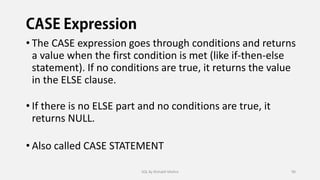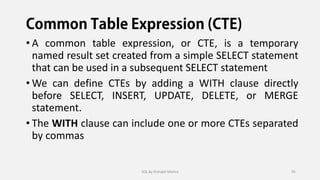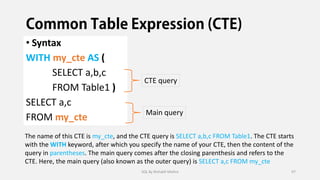This document provides an introduction to SQL and a tutorial on various SQL concepts. It begins with an overview of what SQL is and how it is used to interact with databases. It then covers topics like data types, primary keys, constraints, creating tables, inserting/updating/deleting records, the SELECT statement and WHERE clause. Later sections discuss importing data from Excel, functions, aggregate functions, the GROUP BY and HAVING clauses, timestamps and joins. The tutorial is presented in a step-by-step manner over multiple pages with examples provided for each SQL concept.
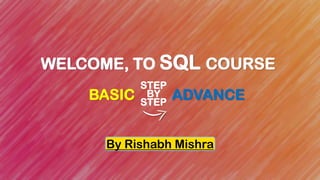


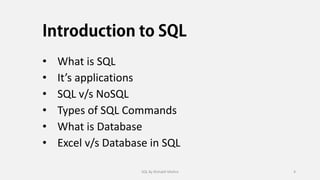






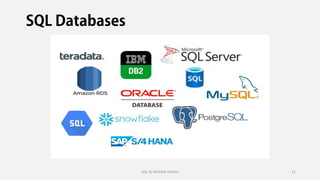



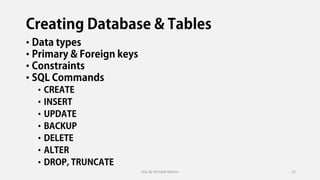























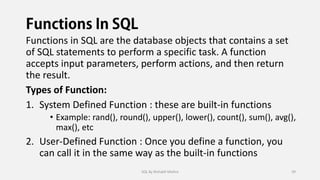

















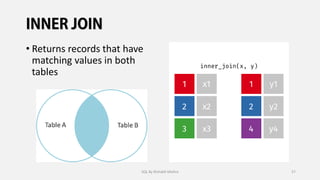





















![SELECT column_name(s),
fun( ) OVER ( [ <PARTITION BY Clause> ]
[ <ORDER BY Clause> ]
[ <ROW or RANGE Clause> ] )
FROM table_name
Select a function
• Aggregate functions
• Ranking functions
• Analytic functions
Define a Window
• PARTITION BY
• ORDER BY
• ROWS
SQL By Rishabh Mishra 80](https://image.slidesharecdn.com/completesqltutorialinhindibyrishabhmishra-230519150502-7f8fa4ea/85/Complete-SQL-Tutorial-In-Hindi-By-Rishabh-Mishra-pdf-79-320.jpg)









